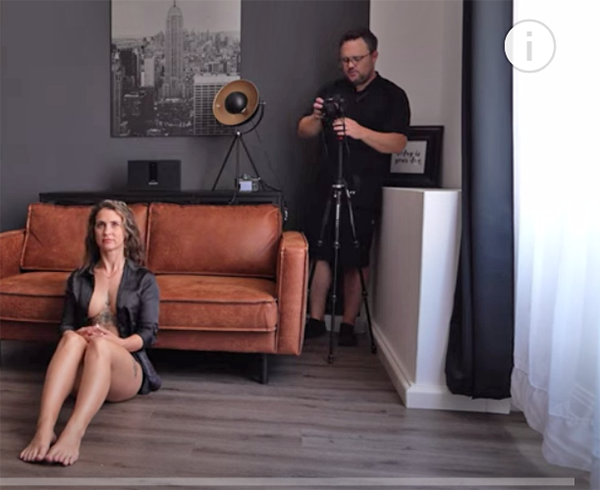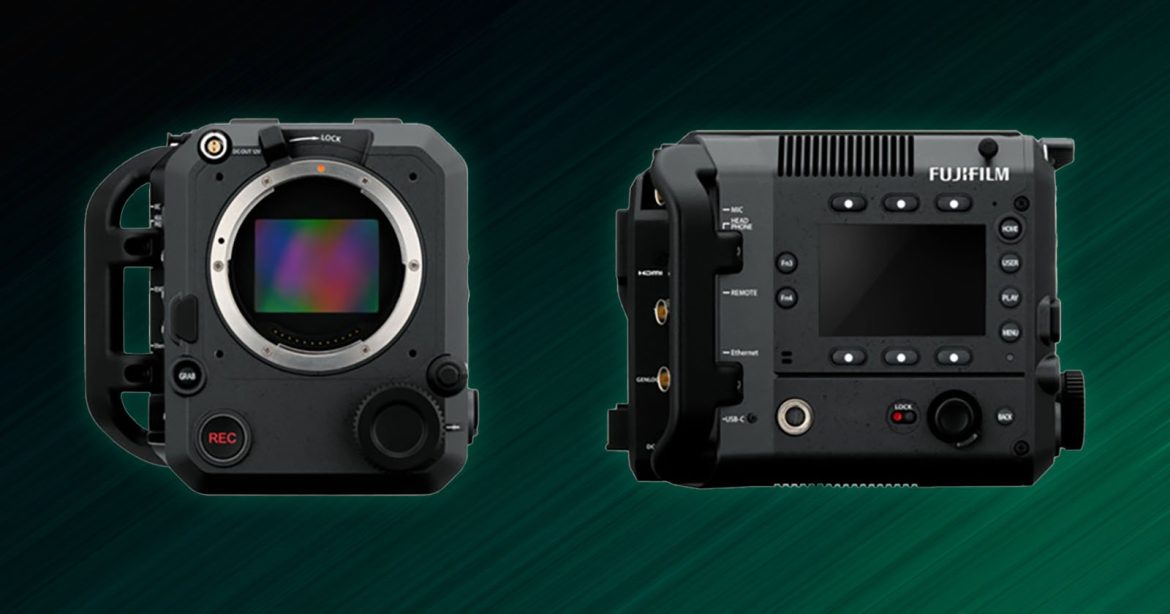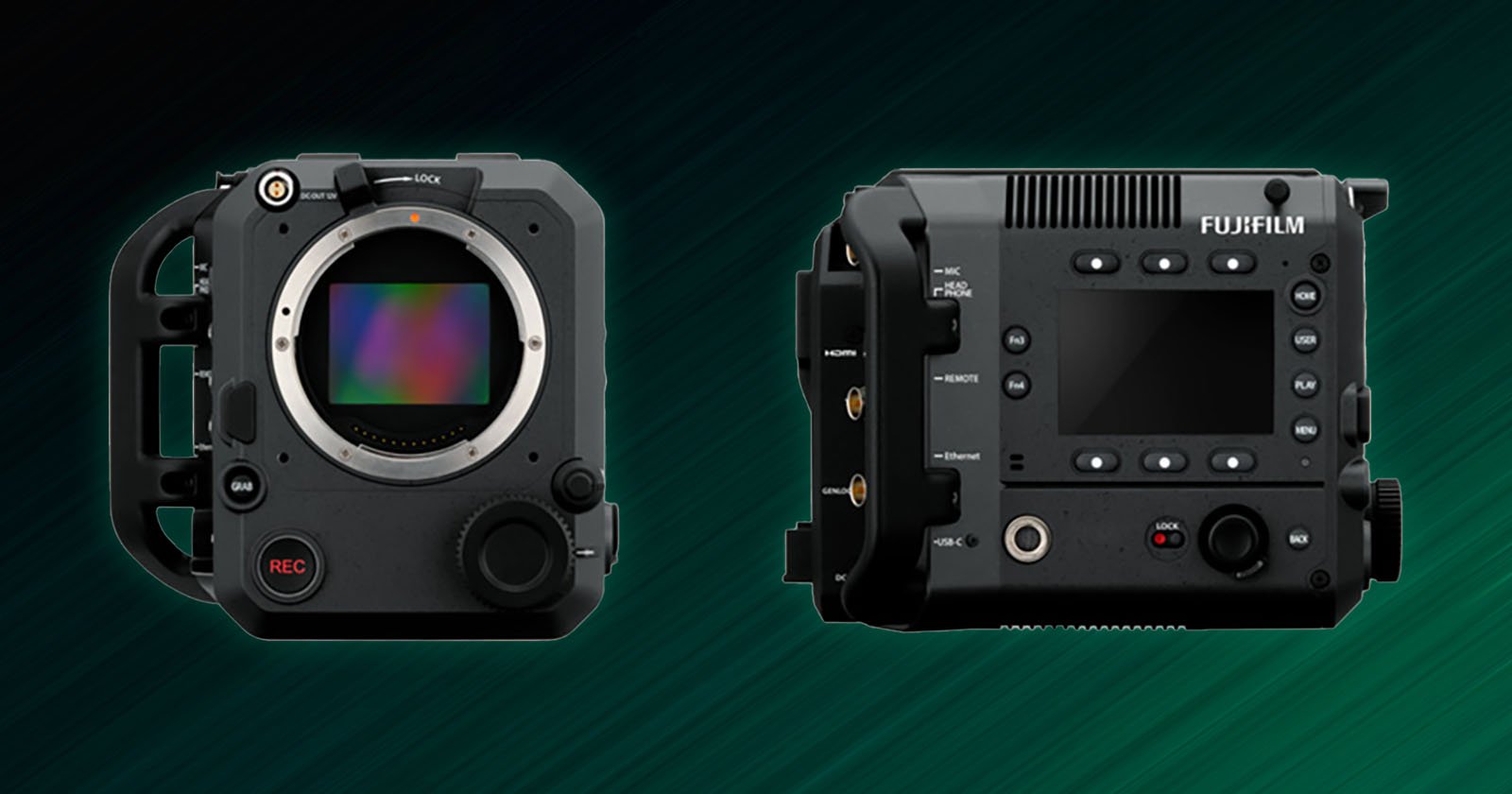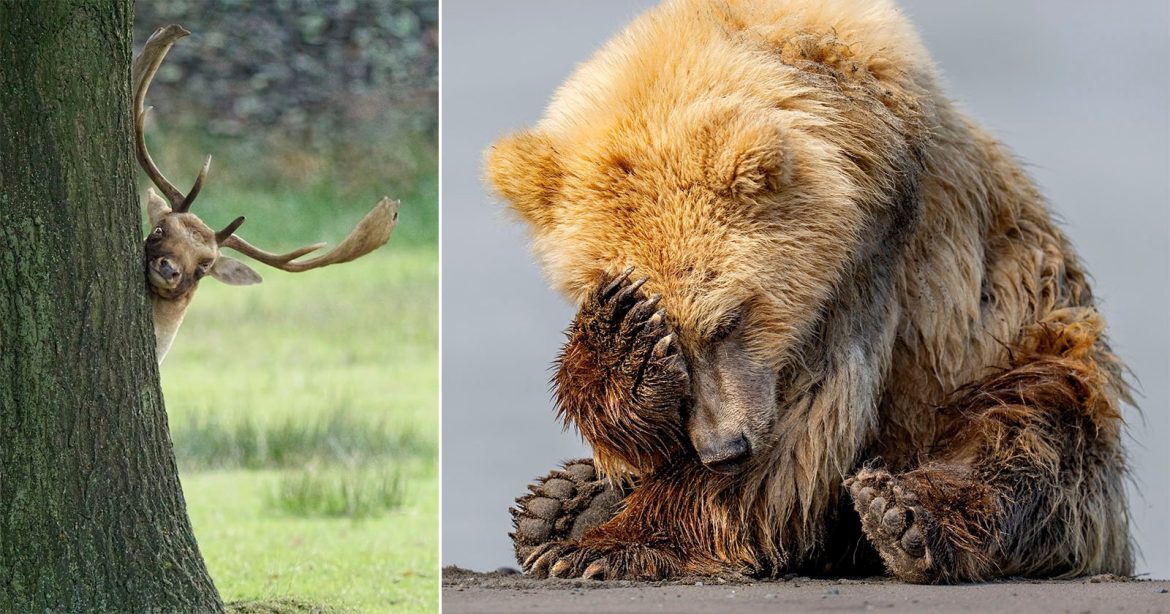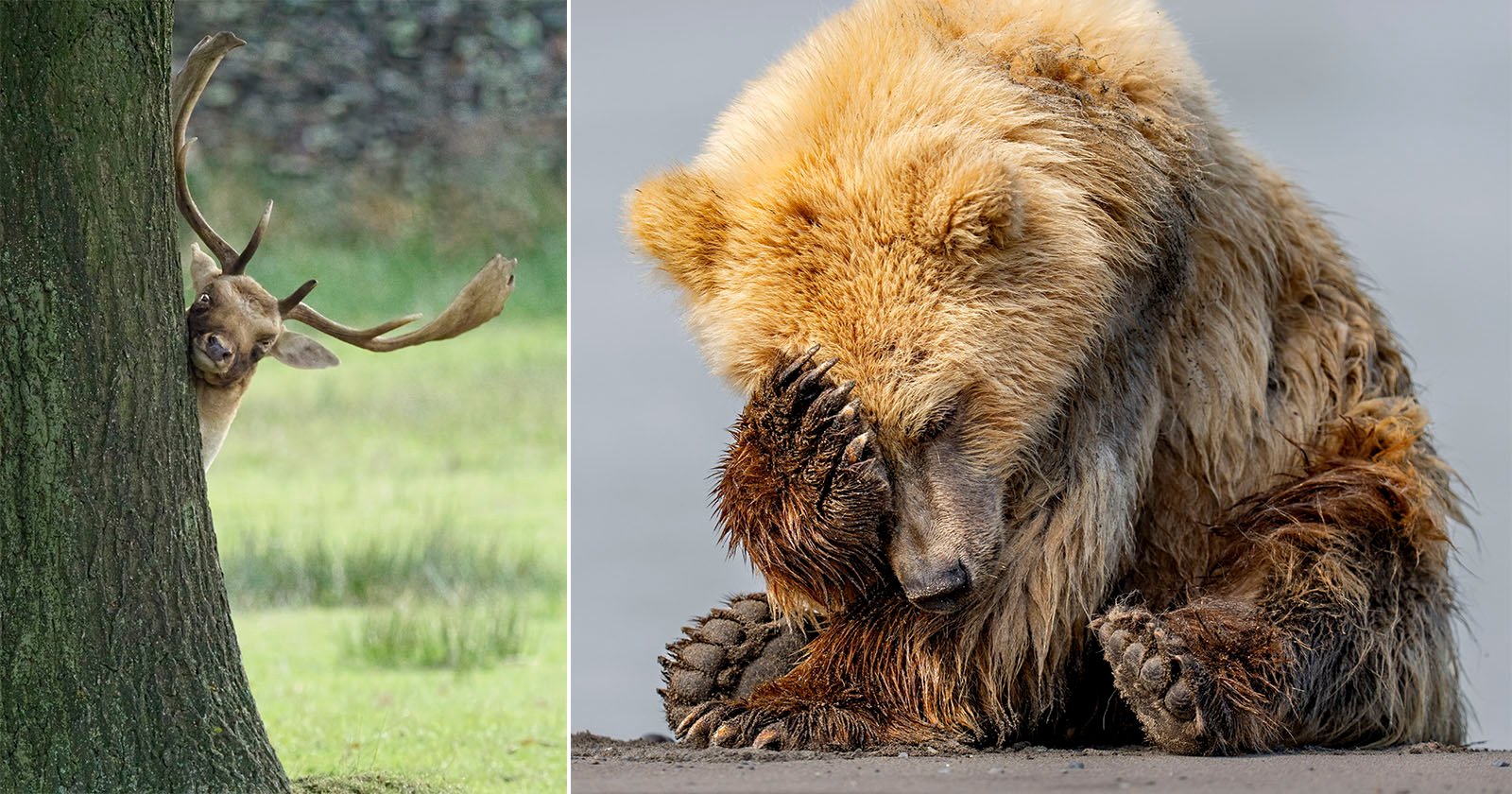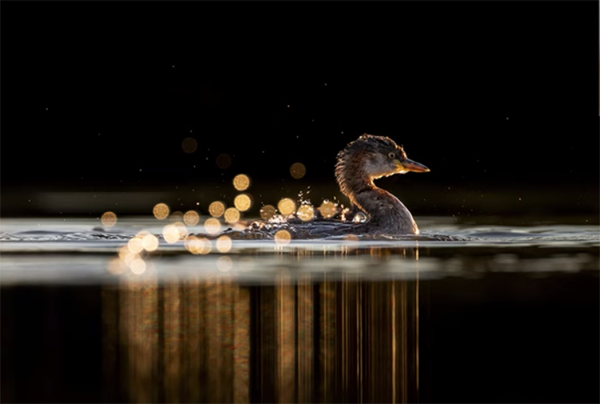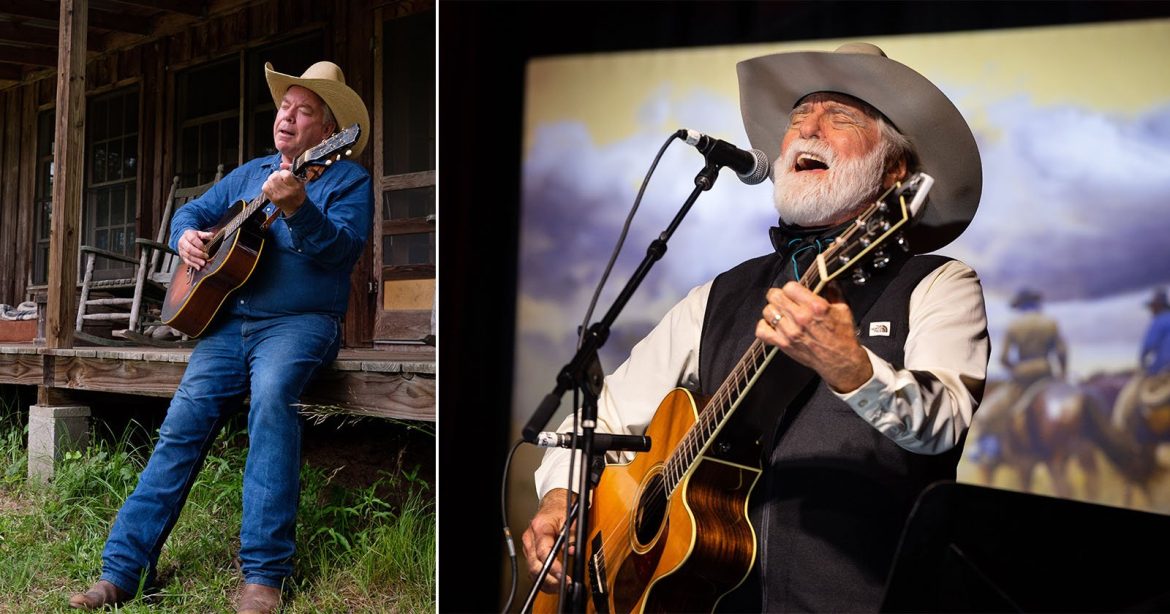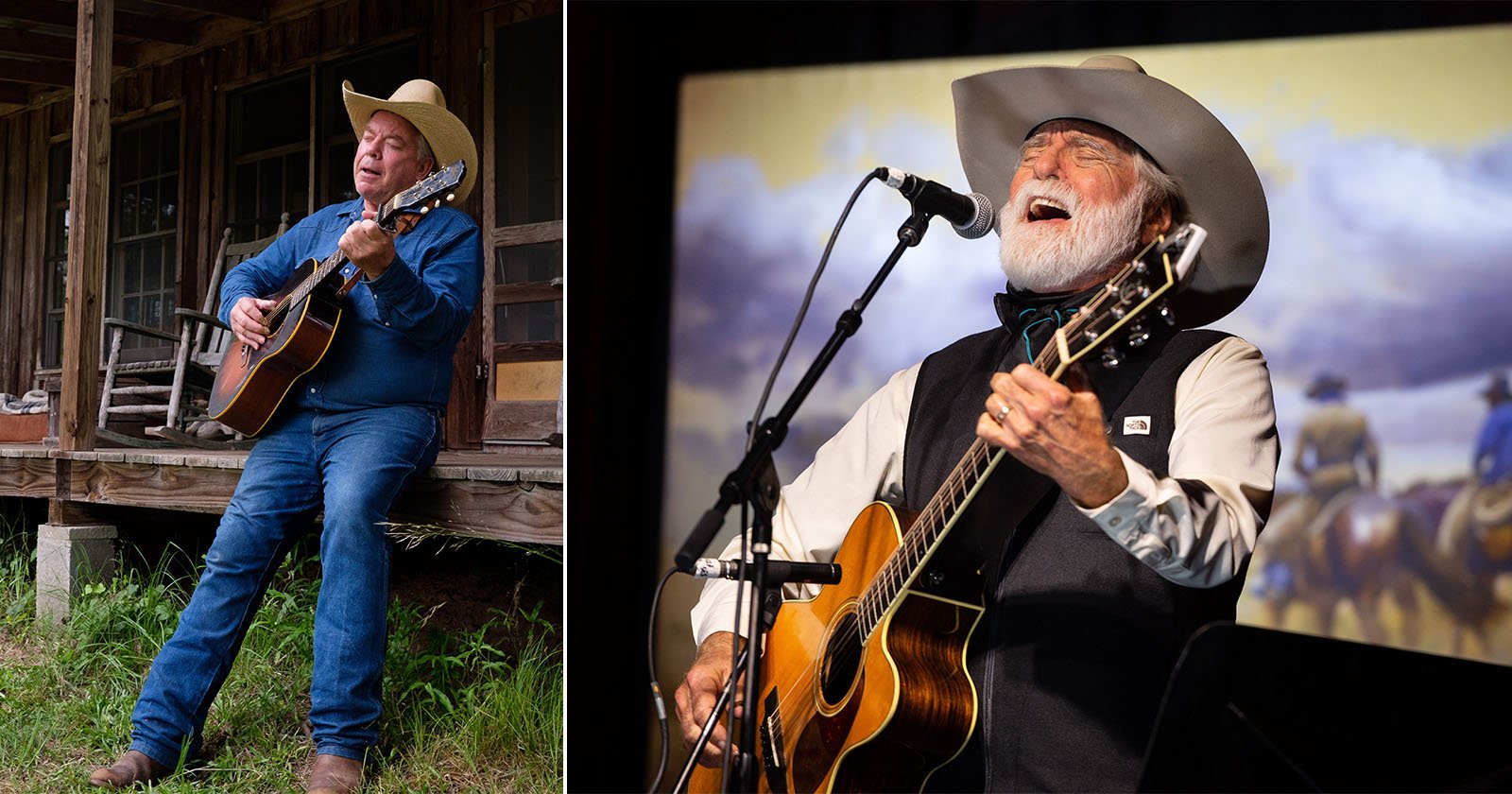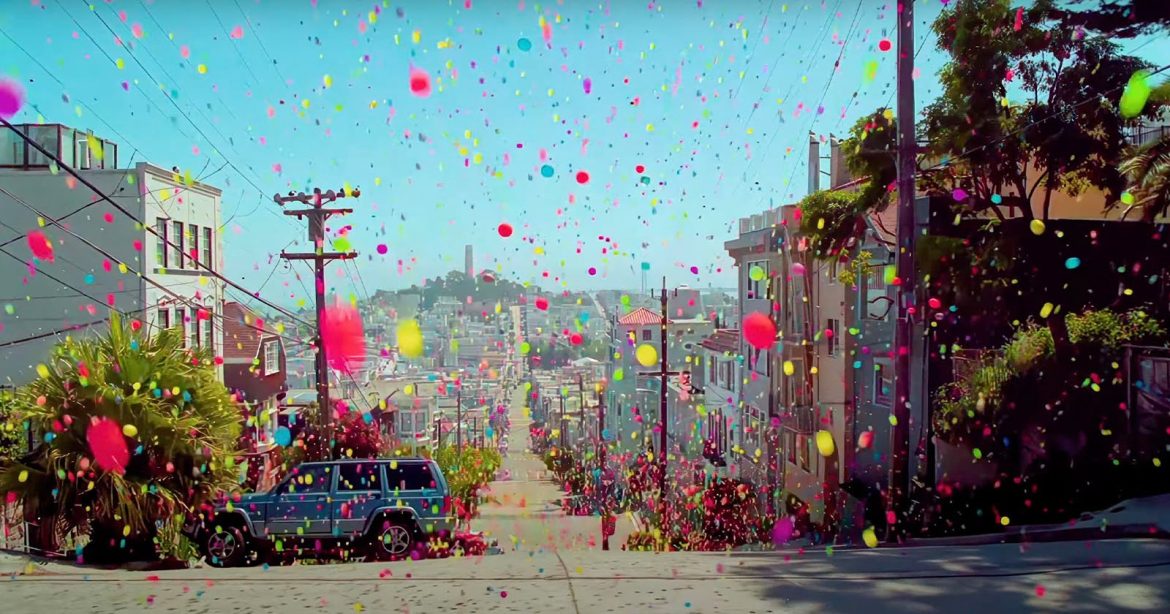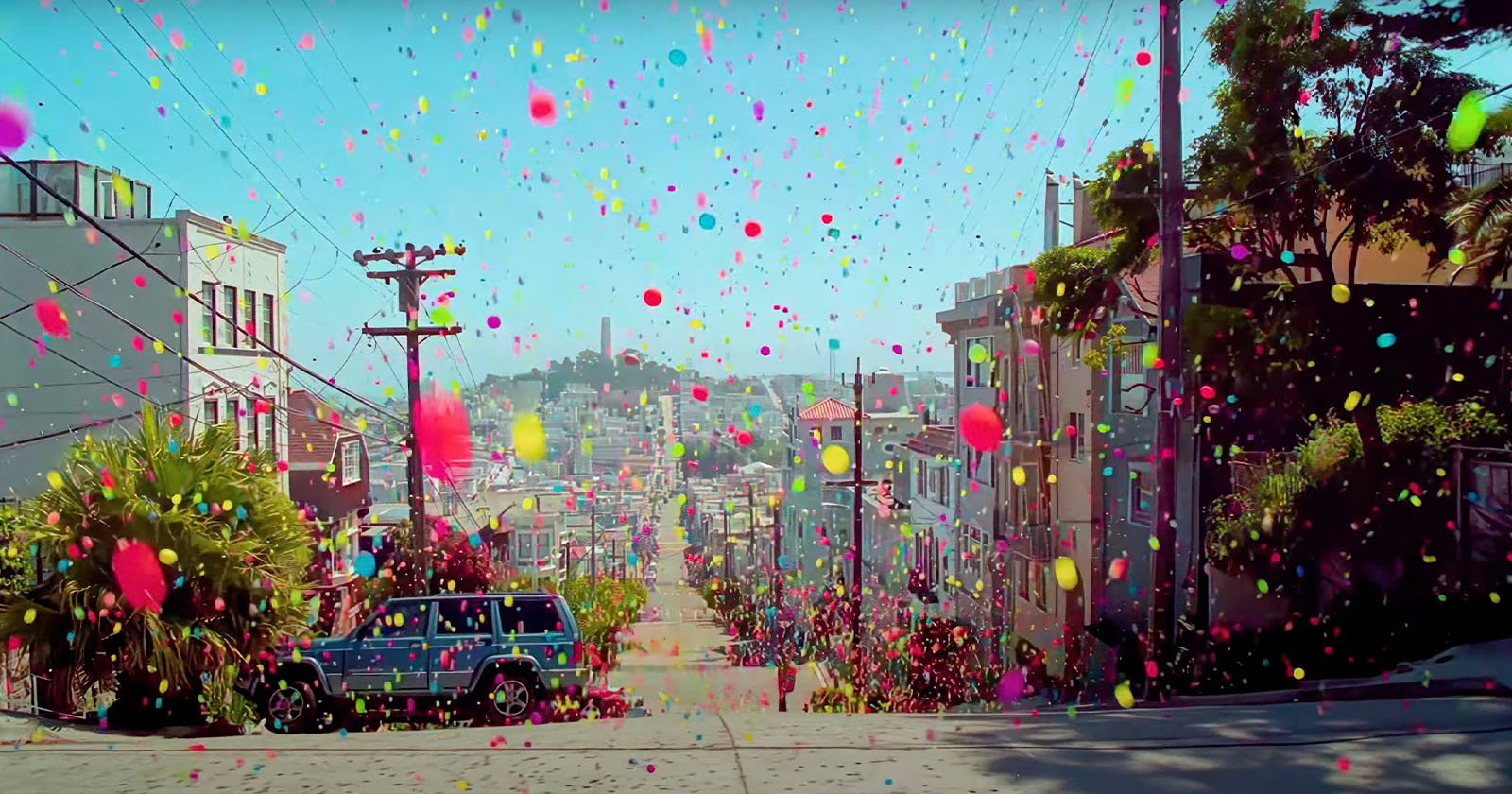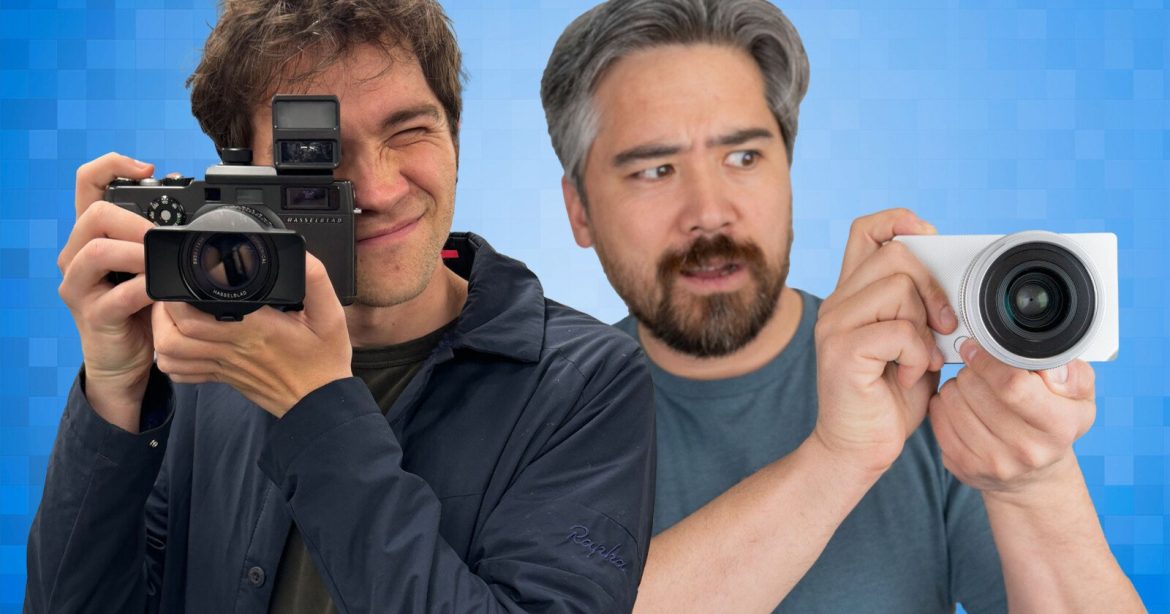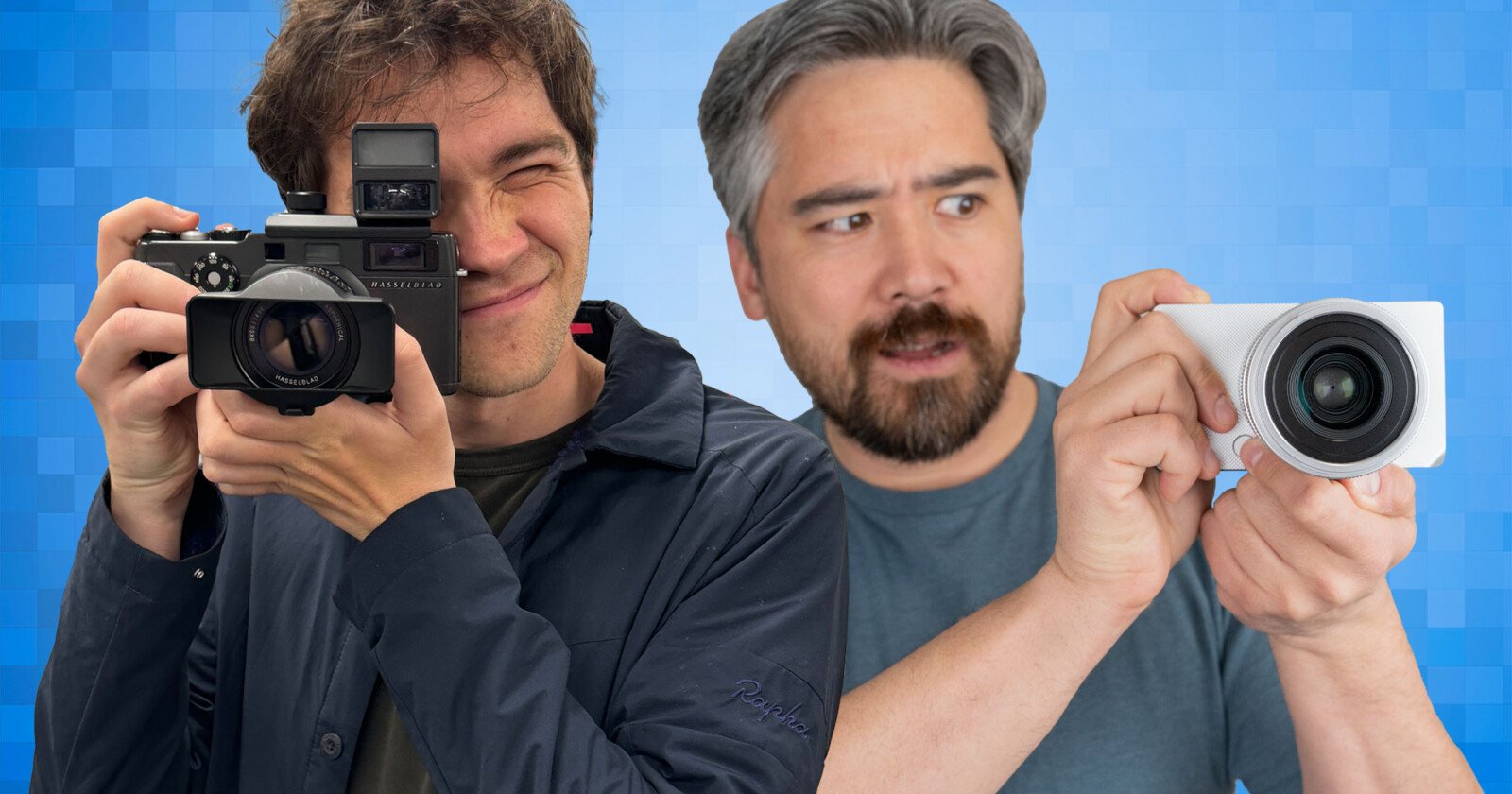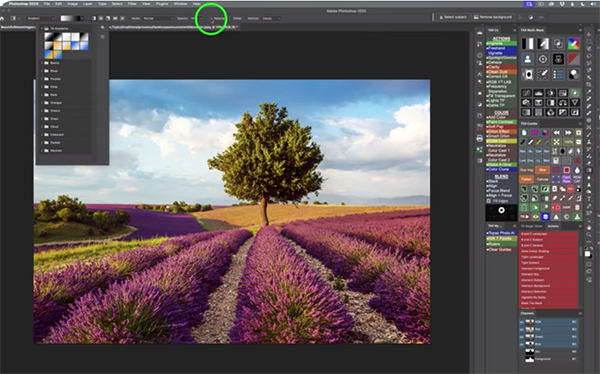After two scrubbed attempts on March 8 and 10, NASA and SpaceX finally launched NASA’s new SPHEREx space telescope aboard a Falcon 9 rocket late on March 11.
Tusk Cinema Series Is ‘World’s First’ Cinema-Grade Lens and Filter System for iPhone
Tusk and ShiftCam teamed up to create the Cinema Series: the world’s first commercial-grade mobile lens and filter system.
Boudoir Basics: A Sensual Pose for Every Body Type with Natural Light (VIDEO)
Boudoir imagery is a unique subset of portraiture that’s growing in popularity as more and more photographers learn how easy it is to pursue with the equipment they already own in the comfort of their home. There’s no need for a decked-out studio or complex-and-expensive lighting gear if you understand how to take advantage of natural illumination streaming through a window.
This quick tutorial from Patrick’s Boudoir Photography Secrets is perfect for r first attempt because it’s super simple. And the comfortable couch pose is easy to teach to a “model” without experience like a spouse, friend, or significant other.
Patrick is a Vienna-based portrait artist specializing in b&w natural-light photography and this episode is installment #20 of his ongoing Two-Minute Tips series that explores posing, storytelling, image structure and more. In the next four minutes you’ll the simple steps for keeping a model comfortable by providing simple guidance, along with the necessary camera settings and shooting techniques to achieve compelling images that make you and your model proud.

Thoughtful composition also factors into the equation, especially when using soft window light to illuminate your “set.” You’ll be surprised to see how slight adjustments in body posture can enhance femininity when photographing models of all body types. The trick is understanding how to identify and accentuate a subject’s best physical attributes.
You’ll also learn why b&w boudoir photographs can be so compelling once you understand Patrick’s methods for creating stunning highlights and shadows without supplemental lighting. He also demonstrates how to quickly and effectively edit your images with his Ultimate Pack Lightroom Presets (there’s a link in the description beneath the video.
Mother’s Day is coming up in a couple months, and a nicely-frame boudoir photo of your wife will me a really nice gift. So start practicing now.

Be sure to check out Patrick’s instructional YouTube channel if this video strikes your fancy. There’s much more to learn about this fascinating genre, and you’ll also be able to view the first 19 episodes of this series.
And don’t miss the related tutorial we featured earlier with an image-editing beginners guide to transforming dull color photographs into attention-grabbing monochrome images.
Fujifilm’s GFX Eterna Cinema Camera to Have 4K Open Gate Recording, Dual Base ISO
Fujifilm’s upcoming GFX Eterna cinema camera remains mostly under wraps. First announced last November, very little has been shared about the camera since. However, speaking to PetaPixel at CP+ in February, the company confirmed two more features.
18 Hilarious Unseen Photos From the Nikon Comedy Wildlife Awards
The Nikon Comedy Wildlife Awards 2025 competition is open to entries. To celebrate the 2025 contest’s opening, the organizers shared a smattering of never-before-seen entries from the incredible 2024 contest, which photographer Milko Marchetti won with his hilarious photo of an adventurous squirrel temporarily stuck in a tree.
In-Camera Effects for Epic Nature & Wildlife Photos (VIDEO)
Here’s a unique tutorial from bird photographer Shelley Pearson who treats us to an uncommon mix of information, gorgeous imagery, and inspiration for nature and wildlife shooters. In the next five minutes you’ll learn how to unlock the beauty of backlighting effects.
Pearson is a long-time Australian pro who travels the globe while documenting her vision of the natural world. Today’s lesson is the second installment of a two part primer, and the initial episode can be found here if you missed it. It’s a worthwhile series, especially for those of you who want to get things right in the camera.

The video begins with a display of Pearson’s stunning work set to music so that you’re in the right mood for the technical details and insights that follow. It all happens in the next five minutes, with real-world examples of everything you’ll learn to elevate your wildlife photography game.
One super powerful technique involves using natural rim lighting to accentuate a subject with a soft, beautiful glow and this is the first topic of discussion as Pearson explains the concept and how to get it done. She describes the best vantage point from which to shoot, how to position yourself properly relative to the sun, employ eye-catching camera angles, and appropriate camera settings and gear.
Pearson has a lot more up her sleeve as the lesson proceeds, with solid recommendations for taking advantage of how the color of light throughout the day. She also has great tips for enhancing atmospheric effects in certain types of weather. And thoughtful composition also factors into the equation.

So make sure to watch both installments of this interesting primer, and then pay a visit to Pearson’s instructional YouTube channel when you have time to explore.
And don’t miss the recent lesson we featured with another popular pro who demonstrates the exposure techniques that enables him to capture photographs with detail in subjects that are darker than normal.
Photographing the Unique Cowboy Poet Tradition of the American West
If photography is a custodian of collective memory, then Jessica Brandi Lifland has a high calling.
That Time a Film Crew Let 250,000 Bouncy Balls Free Through San Francisco
In 2005, Sony Bravia filmed a striking ad for its televisions featuring a quarter of a million colorful bouncy balls hopping down the steep streets of San Francisco.
Is Chris Wrong About the Sigma BF? Featuring David Imel | The PetaPixel Podcast
This week on The PetaPixel Podcast, the team is joined by David Imel to talk about the Sigma BF and why Chris Niccolls — who laments the many things cut out to make it “radically simple” — might be wrong.
12 FREE Gradients for Fast, Creative Photo Effects (VIDEO)
Photoshop’s Gradient tools serve a wide variety of purposes for bringing outdoor photos to life by gradually blending colors or opacity. There are various options available for better colors, smoothing transitions and applying creative effects. The rub is that it takes a bit of time to get the adjustments just right.
Today’s quick video from the Joy of Editing YouTube channel short circuits the process by providing 12 timesaving Photoshop Gradients that are ready to go. Instructor Dave Kelly, creator of today’s collection, is an image-editing expert whose straightforward tutorials are designed to unlock the full potential of every image you process, and these Gradients go a long way toward fulfilling that promise.
The first thing you need to do is click on the link beneath the video and visit the TK Web Store. Then scroll down until you find “TK Gradients” and import them into Photoshop with the quick instructions provided below. As Kelly says, “Now you can access them within Photoshop’s Gradient panel to make image-boosting Gradients more intuitive, and efficient.”

Kelly provides a quick overview for those of you who haven’t employed Gradients in the past. Then he describes your new free tools, illustrates their intended use, and demonstrates how easy they are to apply for a variety of immediate effects. Ten minutes is all it takes to save yourself hours in the future.
Be sure to heed this important warning before getting started: “Never check on Reverse in the dropdown at the top of the screen because these Gradients are set up to be used just as you find them.” With that out of the way Kelly pulls up a few impressive landscape images and discusses how to choose the ideal Gradients for different types of photos—depending upon lighting, composition, color, and other key variables in a scene.
One of our favorites is the Black-to-Transparent Gradient example you’ll find near the end of this episode. Once you grab these free image-editing assets you’ll be able to get the computer work done fast so you can head back into the field with your gear as soon as possible.

The popular Joy of Editing YouTube channel is full of important how-to videos and the occasional freebie, so be sure to visit often.
On a related note, don’t miss a tutorial we featured recently with another very accomplished instructor who demonstrates how to employ four more amazing post-processing effects for landscape and nature photographs that look different than the rest.


